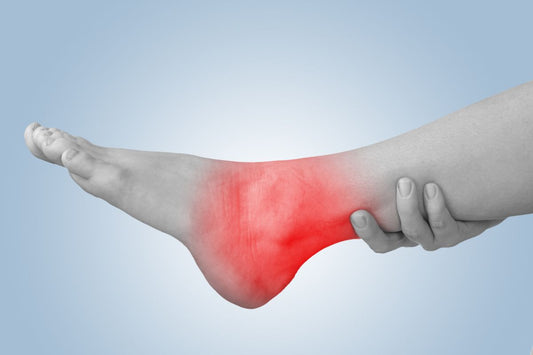Tennis elbow braces are essential tools for managing pain and promoting recovery from conditions like tennis elbow (lateral epicondylitis) and golfer’s elbow (medial epicondylitis). However, their effectiveness largely depends on how you wear them and where you place them.
In this guide, we'll cover everything you need to know about wearing a tennis elbow brace properly, including step-by-step instructions, optimal placement tips, and common mistakes to avoid.
Why Proper Wearing & Placement Matter
Wearing a tennis elbow brace incorrectly can significantly reduce its effectiveness. Proper placement ensures that the brace:
- Applies targeted compression to the affected tendon.
- Reduces strain during activity.
- Alleviates pain effectively.
Braces are designed to redirect force away from the injured area, allowing the tendon to rest and heal. Without proper placement, this mechanism fails.
How to Wear a Tennis Elbow Brace (Step-by-Step)
Step 1. Select the Right Brace:
Choose a brace designed specifically for tennis elbow. It should be adjustable, comfortable, and durable.
Step 2. Find the Correct Placement Area:
- Identify the area of pain on your forearm. Typically, this will be just below the elbow, on the outside of your arm (lateral epicondyle).
- This is the origin point of the extensor muscles that are overworked and inflamed.

Step 3. Position the Brace:
- Place the brace 1–2 inches below the painful spot (not directly on the elbow).
- Ensure the padded section of the brace is positioned directly over the forearm muscles (extensors) to relieve strain on the tendon.
Step 4. Adjust the Compression:
- Tighten the strap until you feel firm, but comfortable pressure.
- It should be snug but not so tight that it cuts off circulation or causes discomfort.
Step 5. Check for Comfort & Stability:
- Move your arm gently to ensure the brace stays in place.
- If it shifts or feels too loose, adjust accordingly.
Tennis Elbow Brace Placement: What’s the Ideal Position?
Optimal placement is crucial for a tennis elbow brace to work effectively.
- Ideal Position: Approximately 1–2 inches below the elbow joint on the forearm.
- Why This Matters: The goal is to create a new pressure point that absorbs strain before it reaches the injured tendon.
- Mistake to Avoid: Placing the brace directly on the elbow joint, which can reduce its effectiveness and cause discomfort.
Common Mistakes to Avoid
-
Placing the Brace Too High or Low:
Incorrect positioning can prevent the brace from effectively redistributing tension away from the tendon. -
Over-Tightening:
While compression is essential, excessive tightening can lead to restricted blood flow or even increase pain. -
Wearing the Brace Continuously:
It’s recommended to wear the brace during activities that aggravate symptoms but not all day, unless instructed by a healthcare professional. -
Ignoring Pain Signals:
If wearing the brace causes pain or discomfort, recheck its placement and fit. Persistent pain could indicate an incorrect diagnosis or improper usage.
Frequently Asked Questions (FAQs)
Q1: Can I wear a tennis elbow brace all day?
A: It’s best to wear the brace during activities that aggravate your symptoms, such as sports, lifting, or repetitive motions. Wearing it all day is generally unnecessary unless advised by a healthcare professional.
Q2: How tight should a tennis elbow brace be?
A: It should feel snug and apply gentle pressure but never be so tight that it restricts circulation or causes numbness.
Q3: Can I wear a tennis elbow brace while sleeping?
A: It’s usually not recommended to wear the brace during sleep. Resting the arm naturally during sleep is more beneficial for recovery.
Q4: What’s the difference between a tennis elbow brace and a compression sleeve?
A: A tennis elbow brace applies direct pressure to the forearm muscles, whereas a compression sleeve provides general compression over a larger area. You can read more in our detailed comparison: Tennis Elbow Brace vs Compression Sleeve.
Final Thoughts
Wearing a tennis elbow brace correctly can make a substantial difference in pain relief and recovery. By ensuring proper placement and compression, you can reduce strain on the affected tendon and improve your overall comfort during daily activities.
Looking for the best tennis elbow brace? Explore our Tennis Elbow Brace Collection for top-quality options designed to enhance support and performance.




